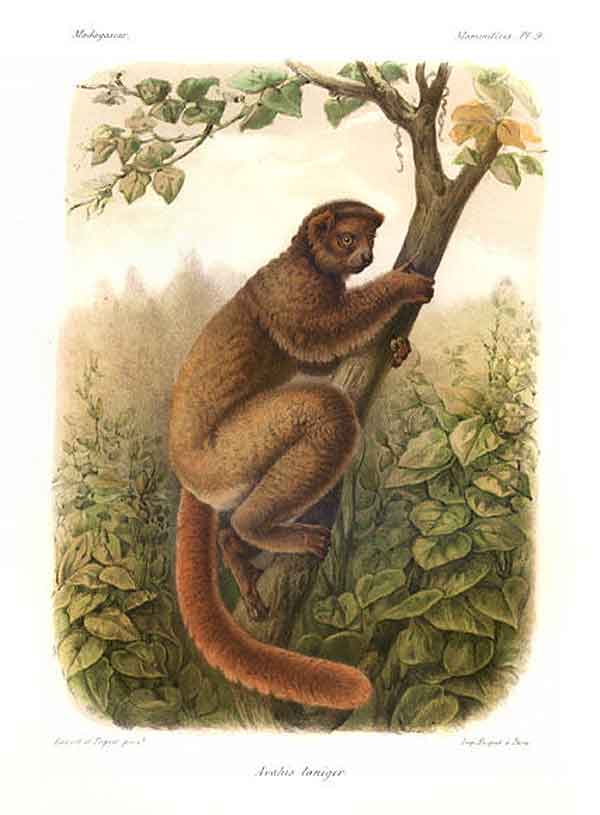
Superregnum: Eukaryota
Cladus: Unikonta
Cladus: Opisthokonta
Cladus: Holozoa
Regnum: Animalia
Subregnum: Eumetazoa
Cladus: Bilateria
Cladus: Nephrozoa
Superphylum: Deuterostomia
Phylum: Chordata
Subphylum: Vertebrata
Infraphylum: Gnathostomata
Megaclassis: Osteichthyes
Cladus: Sarcopterygii
Cladus: Rhipidistia
Cladus: Tetrapodomorpha
Cladus: Eotetrapodiformes
Cladus: Elpistostegalia
Superclassis: Tetrapoda
Cladus: Reptiliomorpha
Cladus: Amniota
Cladus: Synapsida
Cladus: Eupelycosauria
Cladus: Sphenacodontia
Cladus: Sphenacodontoidea
Cladus: Therapsida
Cladus: Theriodontia
Subordo: Cynodontia
Infraordo: Eucynodontia
Cladus: Probainognathia
Cladus: Prozostrodontia
Cladus: Mammaliaformes
Classis: Mammalia
Subclassis: Trechnotheria
Infraclassis: Zatheria
Supercohors: Theria
Cohors: Eutheria
Infraclassis: Placentalia
Cladus: Boreoeutheria
Superordo: Euarchontoglires
Ordo: Primates
Subordo: Strepsirrhini
Infraordo: Lemuriformes
Superfamilia: Lemuroidea
Familia: Indriidae
Genus: Avahi
Species: Avahi laniger
Name
Avahi laniger (Gmelin, 1788)
References
Zaramody, A. et al. 2006: Molecular phylogeny and taxonomic revision of the eastern woolly lemurs (Avahi laniger). Primate report, 74: 9–23.
Avahi laniger in Mammal Species of the World.
Wilson, Don E. & Reeder, DeeAnn M. (Editors) 2005. Mammal Species of the World – A Taxonomic and Geographic Reference. Third edition. ISBN 0-8018-8221-4.
Vernacular names
Deutsch: Östlicher Wollmaki
The eastern woolly lemur (Avahi laniger), also known as the eastern avahi or Gmelin's woolly lemur, is a species of woolly lemur native to eastern Madagascar, where it lives in the wet tropical rainforest at low elevations along the eastern coast of the island or they can also inhabit the northern tip of the island with other species.[4] The woolly lemur name refers to their thick, tightly curled hair, whereas their generic name avahi refers to their high-pitched defensive call. The eastern woolly lemur almost has an owl-look with its large eyes, small rounded head, and ears that are mostly hidden.[5] This nocturnal animal weighs 1.0–1.3 kg (2.2–2.9 lb) and reaches a length of 27–29 cm (11–11 in) with a tail of 33–37 cm (13–15 in). Its diet consists mainly of leaves and buds with fruits, flowers, and bark.
Eastern woolly lemurs live in monogamous pairs together with their offspring. The eastern woolly lemur's breeding season ranges from March to May with the baby lemurs being born around August to September.[6]
Other lemur species that live in the same rainforests as eastern woolly lemur are the diademed sifaka (Propithecus diadema) and the red-bellied lemur (Eulemur rubriventer). In southeastern rainforests, sympatric lemur species of A. meridionalis are the brown mouse lemur (Microcebus rufus), the greater dwarf lemur (Cheirogaleus major), the fat-tailed dwarf lemur (Cheirogaleus medius) and the collared brown lemur (Eulemur collaris) in Sainte Luce Forest, and the southern lesser bamboo lemur (Hapalemur meridionalis) in Mandena Forest.
According to one study, a male lemur rarely interacts with more than one other individual when sleeping, traveling or grooming. At night, he would spend about 40% of the time with his partner either grooming or resting.[7]
As of 2020, the eastern woolly Llemur continues to exist; however, based on a 2000 study, the entire lemur population might be endangered if the forests continues to "disappear at a disastrous rate".[8] This could be due to many reasons, for example deforestation and forest degradation.
References
Wikispecies has information related to Eastern woolly lemur.
Patel, E. (2020). "Avahi laniger". IUCN Red List of Threatened Species. 2020: e.T2434A115559557. doi:10.2305/IUCN.UK.2020-2.RLTS.T2434A115559557.en. Retrieved 19 November 2021.
"Checklist of CITES Species". CITES. UNEP-WCMC. Retrieved 18 March 2015.
Groves, C. P. (2005). Wilson, D. E.; Reeder, D. M. (eds.). Mammal Species of the World: A Taxonomic and Geographic Reference (3rd ed.). Baltimore: Johns Hopkins University Press. p. 119. ISBN 0-801-88221-4. OCLC 62265494.
Andriantompohavana, R.; Randriamanana, J. C.; Sommer, J. A.; Brenneman, R. A.; Louis, E. E. (September 2004). "Characterization of 22 microsatellite loci developed from the genome of the Woolly Lemur (Avahi laniger)". Molecular Ecology Notes. 4 (3): 400–403. doi:10.1111/j.1471-8286.2004.00665.x.
"Eastern woolly lemur (Avahi laniger)". Wildscreen Arkive. 2017-06-05. Archived from the original on 2017-06-05.
Ehler, Pam (2002). "Avahi Laniger (avahi)". Animal Diversity Web. Retrieved 2 May 2017.
Harcourt, Caroline (April 1991). "Diet and behaviour of a nocturnal lemur, Avahi laniger, in the wild". Journal of Zoology. 223 (4): 667–674. doi:10.1111/j.1469-7998.1991.tb04395.x.
Thalmann, Urs; Geissmann, Thomas (December 2000). "Distribution and geographic variation in the western woolly lemur (Avahi occidentalis) with description of a new species (A. unicolor)". International Journal of Primatology. 21 (6): 915–941. doi:10.1023/A:1005507028567. S2CID 38525400. Retrieved 16 October 2020.
Retrieved from "http://en.wikipedia.org/"
All text is available under the terms of the GNU Free Documentation License

